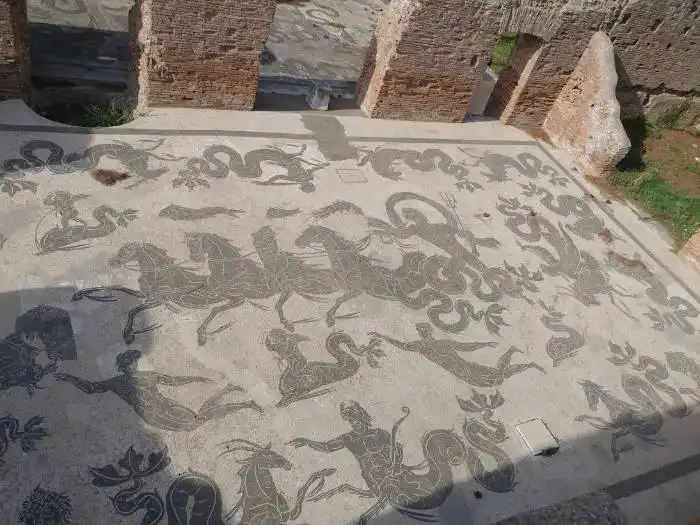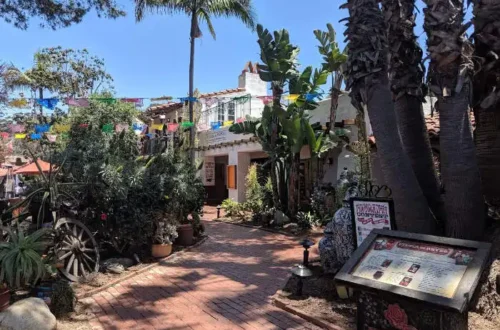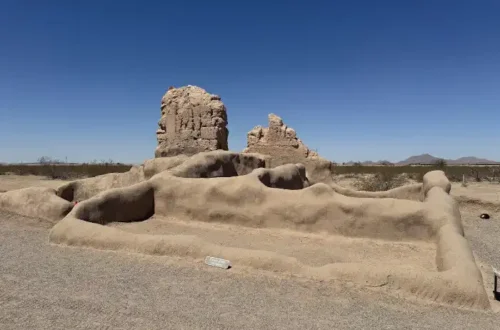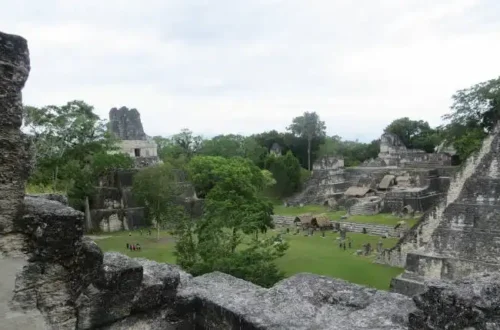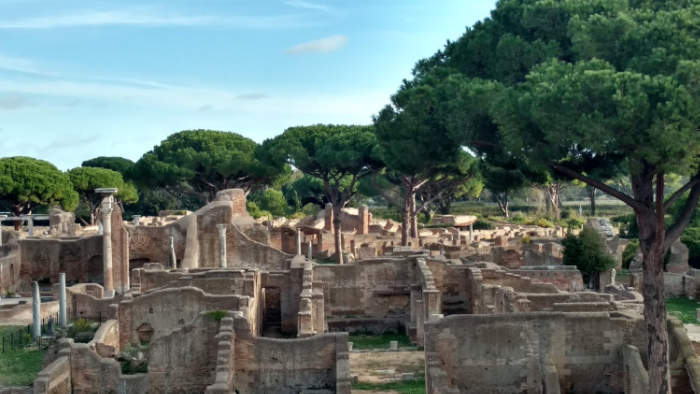
5 Reasons to Visit Ostia Antica Rome’s Ancient Harbor City
Ostia Antica is one of those gems you find on vacation when you’re not really looking. If you’re visiting Rome and didn’t get a chance to see Pompeii or even if you have visited Pompeii you will enjoy a visit to Rome’s ancient port city.
This post may contain affiliate links. Please read my disclosure policy.
Explore Rome’s Ancient Harbour City: Ostia Antica
On our last night in Rome we stayed closer to the airport. We were within walking distance to this ancient city and decided to visit. Ostia Antica is one the best-preserved ancient cities to explore. I was most impressed with the condition of the frescos and mosaics throughout the city.
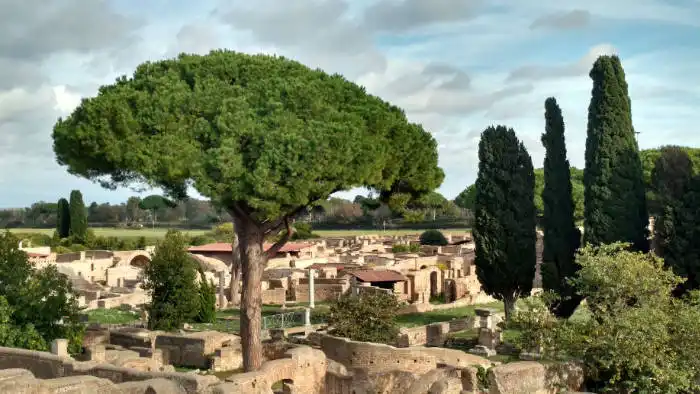
The History of Rome’s Ancient Port City
Built sometime around 620 B.C., Rome’s ancient port city Ostia Antica is located at the mouth of the Tiber River. It was originally a popular city due to the salt that could be gleaned nearby.
The salt was used to preserve meats. However, later Rome used the city as a naval base.
This busy port city imported and exported millions of goods. You can still see the amazingly detailed frescos and mosaics in what at one time was a busy shopping center of the city. At one time more than 50,000 people called this port city home.
Pirates sacked this port city several times and eventually the city fell to disarray and was abandoned in the 9th century.
5 Reasons to Visit Ostia Antica
- Well-preserved intact buildings
- Beautiful black and white mosaics
- Impressive frescoes
- Location- it is near Rome’s Fiumicino airport
- Less crowds than Pompeii
How to Get to Rome’s Ancient Port City
Ostia Antica is about six miles from Rome’s Fiumicino airport. From here you can take a taxi, take the line 2 bus from Fiumicino, or take the line 60 tram to Ostia Antica.
Get off at the Romagnoli/Scavi Ostia Antica bus stop. It will take about 30 minutes to get there from the airport.
Best Sights at Ostia Antica
Plan on at least half a day to explore this ancient port city. We were here for several hours and didn’t see everything. It is easy to become immersed in the history of this place. You can view the forum, warehouses, bath, shops and restaurants.
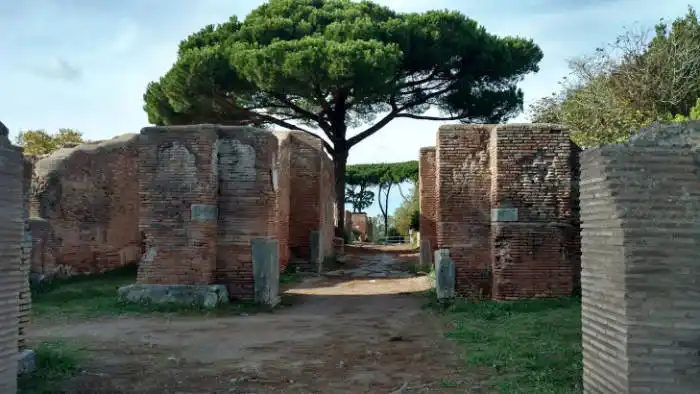
One of the most fascinating buildings in this ancient city was the Thermopolium di Via di Diana. It is so well-preserved you can almost envision the people who once gathered here to socialize, eat and drink.

My other favorite area here was the Piazzale delle Corporazioni or where the Roman merchants sold their wares. This open-air market was marked by detailed mosaics to describe the wares that were being sold.
Each defined section was a shop that sold wares. I loved looking at all the mosaics to learn what was sold at that particular spot.
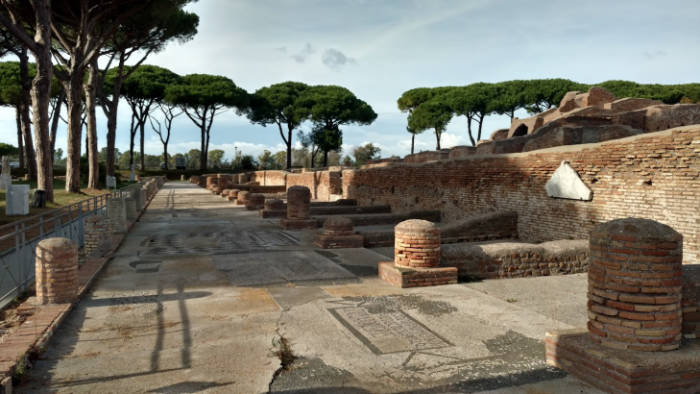
Nearby you can view the well-preserved amphitheater- Teatro di Ostia.
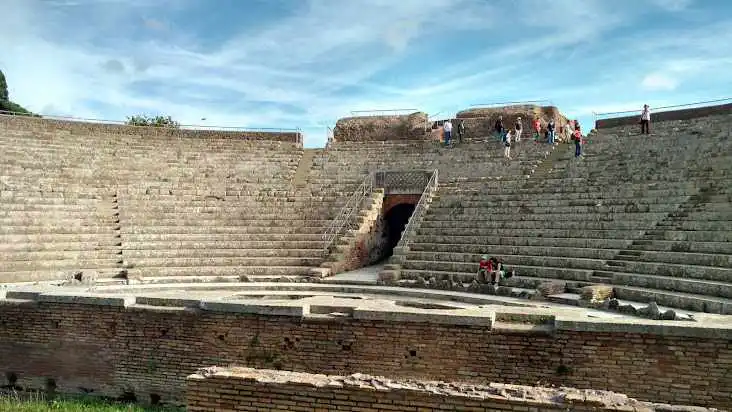
You can see the ancient public thermal Baths of Neptune. The mosaics are in amazing condition.
